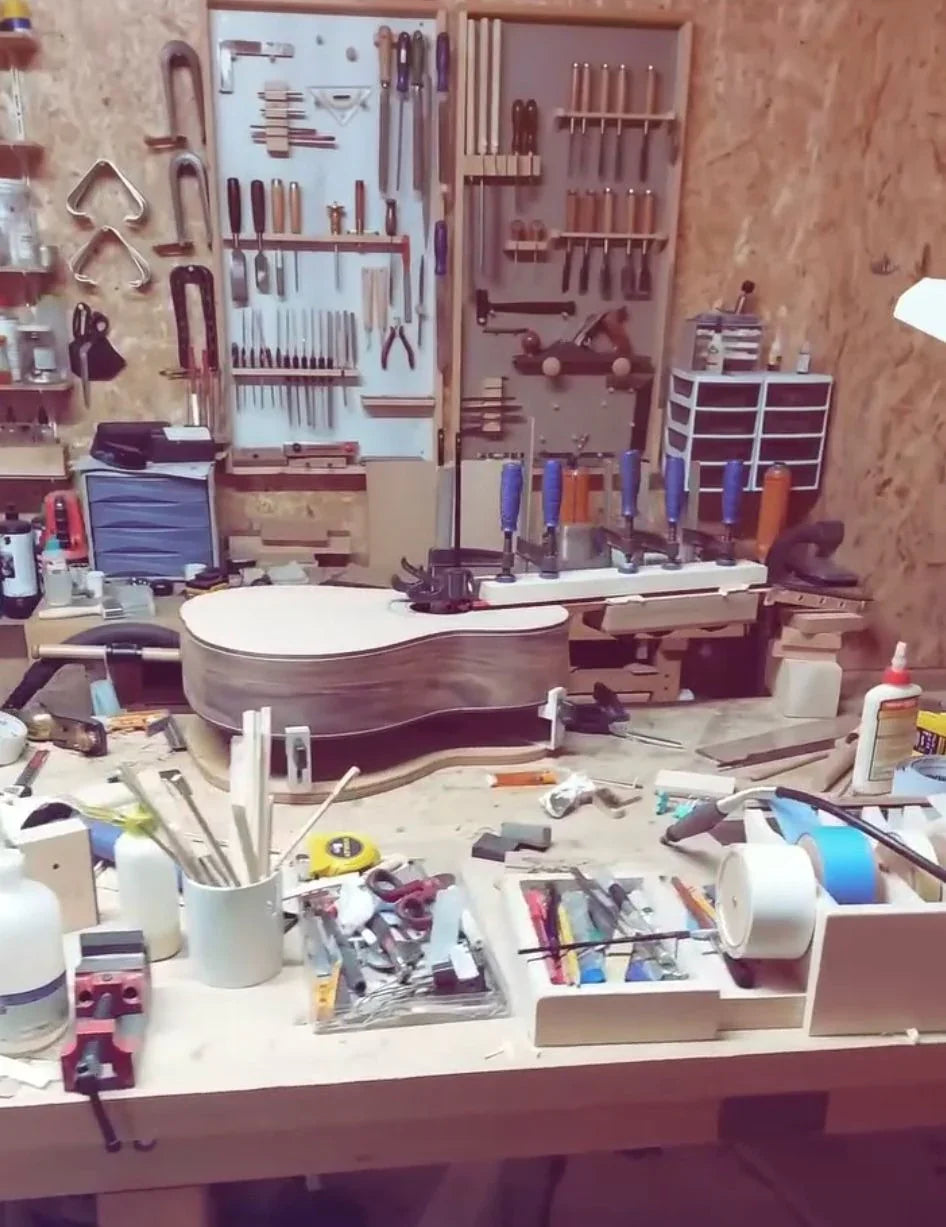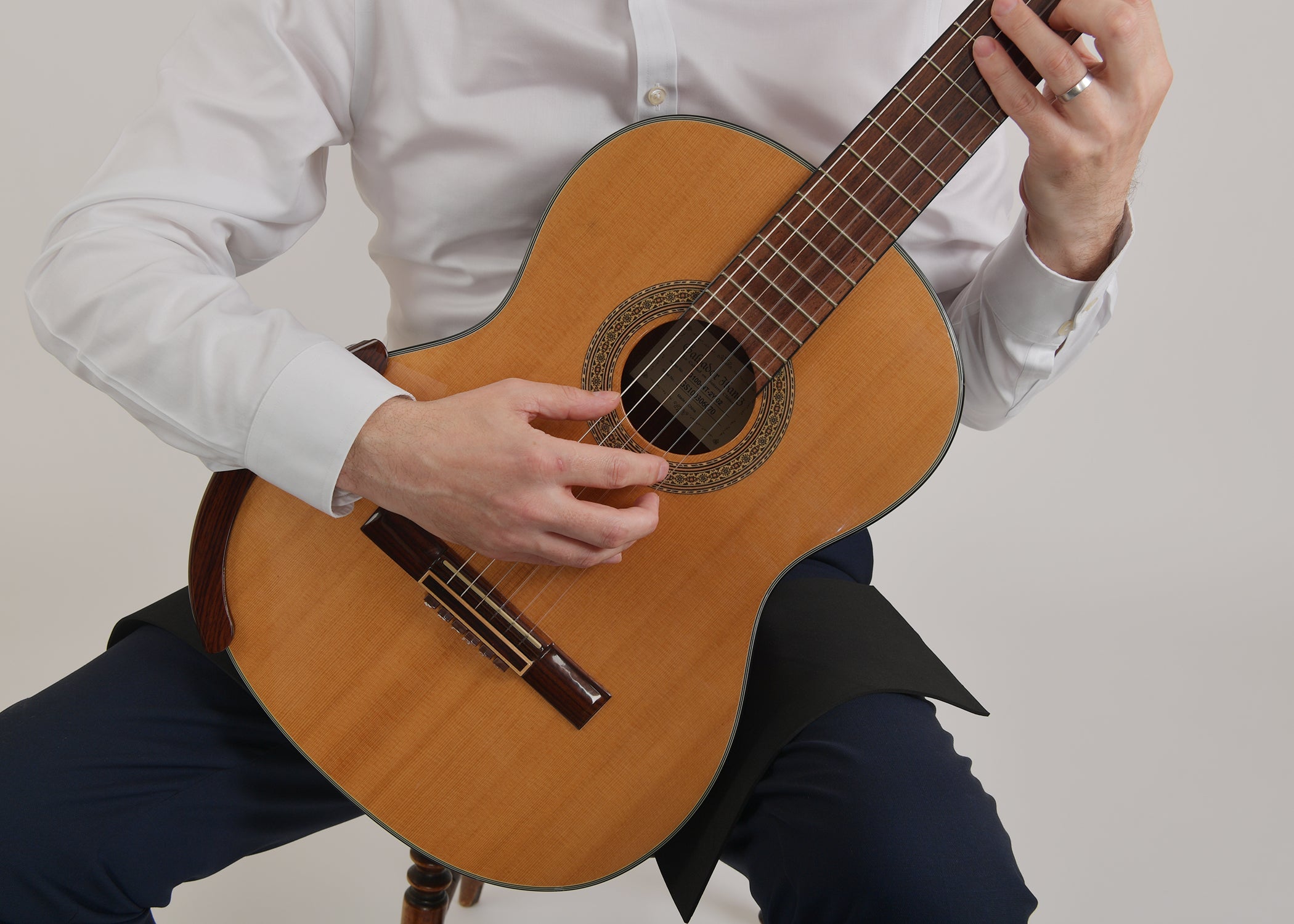Our conversations with Fernando Mazza are never just about wood and strings — they’re about the full process of creating an instrument for serious players.
In this third part of our series, we sat down again to talk about how Fernando’s background as a guitarist shaped his approach to luthiery and how a player’s relationship with their guitar changes as their playing experience grows.
Alba GB:
Fernando, many people know you today as a master luthier, but you were first a very accomplished guitarist. How has being a guitarist shaped the way you build guitars?
Fernando Mazza:
It shapes everything. When you spend years performing, you become sensitive not only to the sound but to how an instrument reacts to touch and phrasing.
I remember what it felt like to play guitars that didn’t respond easily, and also the experience of playing ones that felt like an extension of my hands.
Read Also: Inside the Luthiers Workshop: Talking with Fernando Mazza (Part 1)
As a luthier, I always work toward building guitars that react quickly, offer control, and support the player’s musical intentions.
The goal is to make the instrument as transparent as possible, meaning it allows the player to focus on interpretation, not on compensating for limitations.
Read Also: Inside the Workshop: Talking with Fernando Mazza (Part 2)
Alba GB:
You’ve seen many guitarists grow over the years. How does a guitarist’s relationship with their instrument usually change as their playing and listening skills develop?
Fernando Mazza:
In the beginning, players usually focus on volume, projection, and making sure they are heard. That’s completely normal. But with experience, the ear becomes more refined. Players begin to notice differences in tone consistency, balance across registers, and how easily the guitar responds to small variations in attack.
Read Also: Double Top vs. Traditional Top Classical Guitars: Construction and Tone
They also start to appreciate that a guitar doesn’t have to be the loudest one to be the most effective. A well-balanced instrument that offers wide dynamic control often supports better musical results overall.
Alba GB:
How do you help guitarists find the right materials or guitar design as their musical sensitivity grows?
Read Also: Classical Guitar Armrest: Comfort, Protection, and Superior Sound
Fernando Mazza:
It always starts with a conversation about their technique and their musical goals. If a player has a lighter touch and needs a fast response, I might recommend cedar for its quicker attack.
If they prefer more dynamic range and are comfortable managing slightly more resistance, spruce can be a good fit. I also consider the repertoire they focus on: certain pieces require very clean separation and articulation, where spruce excels, while others benefit from a rounder and softer voice. Matching the right top material and internal structure to the player’s needs is essential.
Read Also: How Plastic Guitar Beads Improve Classical Guitar’s Sound
Alba GB:
Can you give an example where you guided a player toward a different material or guitar type than they originally thought they needed?
Fernando Mazza:
Of course. Recently, a player came to me asking for a very powerful guitar because they needed more presence during performances. At first, they were focused only on output. But during our discussions and some tests, it became clear that their technique emphasized subtle phrasing and detailed dynamic shifts.
Instead of building a very rigid, high-resistance guitar, I recommended a lighter double-top that preserved sensitivity and fine control across all dynamics. The player realized quickly that even without maximum force, the guitar projected well while maintaining their natural phrasing style. It’s about building an instrument that responds to the player’s real strengths.
Read Also: The Evolution of Classical Guitar Supports: Steadiness, Innovation
Alba GB:
When you think about the top materials — spruce, cedar, and others — how do you explain the differences to players making their first real professional guitar choice?
Fernando Mazza:
I explain it based on how the woods behave acoustically. Spruce generally offers better clarity, separation, and a broader dynamic range. It often continues to mature and open over time, rewarding players who invest years into the instrument.
Cedar provides a faster initial response and feels more direct under the fingers. It tends to deliver its full character early on. Both are excellent, depending on what the player expects from the guitar. The choice should reflect their touch, their technical style.
Alba GB:
That’s very clear and helpful. Before we finish, is there one piece of advice you would give to a young guitarist choosing their first serious instrument?
Fernando Mazza:
Yes. Focus on how the guitar reacts to your playing. Pay attention to the ease of producing a clean sound at different dynamics, how even the register balance is, and how well the instrument supports phrasing.
A good guitar should feel cooperative — it should allow you to work naturally without forcing tone or articulation. Volume matters, but a guitar’s quality is measured by how well it responds to the player’s technique.
Alba GB:
Thank you, Fernando. It’s been a real privilege to explore these topics with you over these three conversations.
Fernando Mazza:
Thank you. It’s always a pleasure to have serious discussions about the guitar with people who truly care about the craft.
Alba GB:
We should do that again. Probably in the autumn, when we are starting our new collaboration project. Oh, that was a secret. Well, it’s not anymore if we shared it here. Yes, we will be offering selected instruments from Fernando in our shop.
We’re very excited to start this new chapter together. And we also have to mention that Fernando Mazza used Alba GB carbon cases for all their classical guitars.





Leave a comment
This site is protected by hCaptcha and the hCaptcha Privacy Policy and Terms of Service apply.